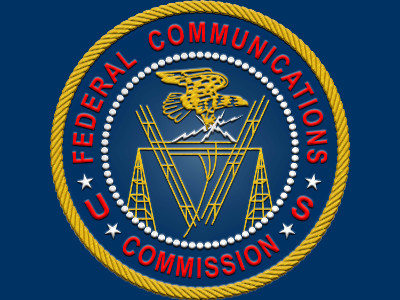FCC Proposes $325K Fine in Broadcast Indecency Case
 ROANOKE, Va. – When Roanoke-based TV station WDBJ decided to run a story about former porn star Harmony Rose signing on as an EMT trainee with the Cave Spring Volunteer Rescue Squad back in 2012, the station probably thought it had a fun little human interest story on its hands — one with just a hint of titillation in the mix, perhaps.
ROANOKE, Va. – When Roanoke-based TV station WDBJ decided to run a story about former porn star Harmony Rose signing on as an EMT trainee with the Cave Spring Volunteer Rescue Squad back in 2012, the station probably thought it had a fun little human interest story on its hands — one with just a hint of titillation in the mix, perhaps.
What WDBJ probably didn’t count on was the report garnering the station a proposed $325,000 fine from the FCC.
Of course, the problem wasn’t the subject of the broadcast, but the not-so-carefully-selected footage which accompanied the WDBJ report.
As the FCC put it in the commission’s Notice of Apparent Liability for Forfeiture, the proposed fine stems from WDBJ’s broadcast of “extremely graphic and explicit sexual material” — specifically, “a naked, erect penis and sexual manipulation thereof.”
It seems one or more editors at WDBJ may have been asleep at the switch when reviewing the footage compiled for the report on Rose, which included video taken from a website on which some of Rose’s content is displayed.
“The website, which was partially displayed along with the video image, is bordered on the right side by boxes showing video clips from other films that do not appear to show the woman who is the subject of the news report,” the FCC notice stated. “One of these video clips, displayed in a box, contains the image of sexual activity involving manipulation of an erect penis. Although the box does not show the entire body or face of the apparently nude male depicted, the image shows a hand moving up and down the length of the shaft of the erect penis.”
All told, the offending material was displayed for less than three seconds, meaning the proposed fine works out to more than $100,000 per second of broadcast indecency on WDBJ’s part.
In arguing against the fine, WDBJ said the “extremely fleeting and partial image of a penis during a news story” does not violate FCC rules. For this and various other reasons, WDBJ asserted the incident should not serve as the basis for FCC enforcement action.
Clearly, the FCC disagreed, considering the proposed fine is the maximum allowable under its broadcast indecency rules as of the time of the offending broadcast. (The WDBJ story aired on July 12, 2012; the 2013 Inflation Adjustment Order raised the maximum forfeiture to $350,000 for obscene, indecent or profane broadcasts aired after Sept. 13, 2013.)
The commission also wasn’t moved by the station’s claim the violation was accidental.
“Having made the choice to gather and display images from an adult film website as part of its newscast, WDJB is subject to sanction for its broadcast of actionably indecent sexual material without taking adequate precautions to avoid such result,” the commission’s notice stated. “Any other application of the three principal factors of our contextual analysis in this case would permit a broadcaster to air graphic and explicit sexual material, including the sexually explicit film clip at issue here, during news aired when there is a reasonable risk that children are in the audience…as long as such material was displayed for three seconds or less.”
Essentially, the commission concluded WDBJ’s negligence in preparing the report was so egregious as to elevate the offense to an “apparent willful violation” of the prohibition on broadcasting indecent or obscene material.
By default, punishment for violations of the FCC’s broadcast indecency rules start at $7,000 per incident. In justifying application of the maximum penalty in this case, the commission asserted “the nature of WDBJ’s apparent violation — the patently offensive depiction of graphic and explicit sexual material obtained by the station from an adult film website — is extreme and grave enough to warrant a significant increase from the $7,000 base forfeiture amount.
“The material that WDBJ broadcast was extremely graphic, lewd and offensive, and this action heightens the gravity of the violation and justifies a higher forfeiture,” the commission’s notice stated. “The video clip that accompanied the screen shots of the former adult film star depicted not only nudity but also graphic sexual activity during a program that was broadcast when there was a reasonable risk that children were likely to be in the audience, and, as set forth in one complaint, were in fact in the audience.”
Jeffrey Marks, president and general manager of WDBJ, issued a statement indicating the station will oppose the proposed forfeiture.
“We are surprised and disappointed that the FCC has decided to propose to fine WDBJ7 for a fleeting image on the very edge of some television screens during a news broadcast,” Marks said in the statement. “The story had gone through a review before it aired. Inclusion of the image was purely unintentional. The picture in question was small and outside the viewing area of the video editing screen. It was visible only on some televisions and for less than three seconds.”
Marks also termed the proposed fine “an extraordinary burden on protected speech.”
“The FCC’s largest base fine for other types of violations by broadcasters is $10,000,” Marks noted. “That is the fine for a misrepresentation to the FCC. A transfer of a license without authorization has a fine of only $8,000; use of a station to commit fraud results in a fine of $5,000; broadcast of an illegal lottery costs a station $4,000. As the FCC admits, its base forfeiture for a violation of the indecency rules is $7,000. This unprecedented proposed fine is more than 46 times higher than the FCC’s own determination of the punishment for indecent speech.”









